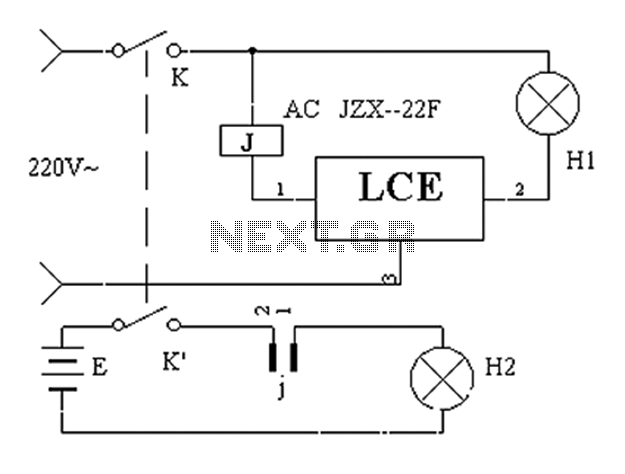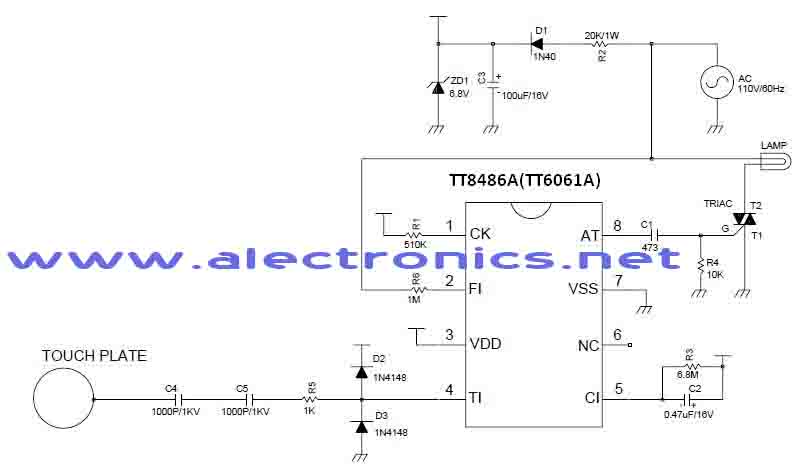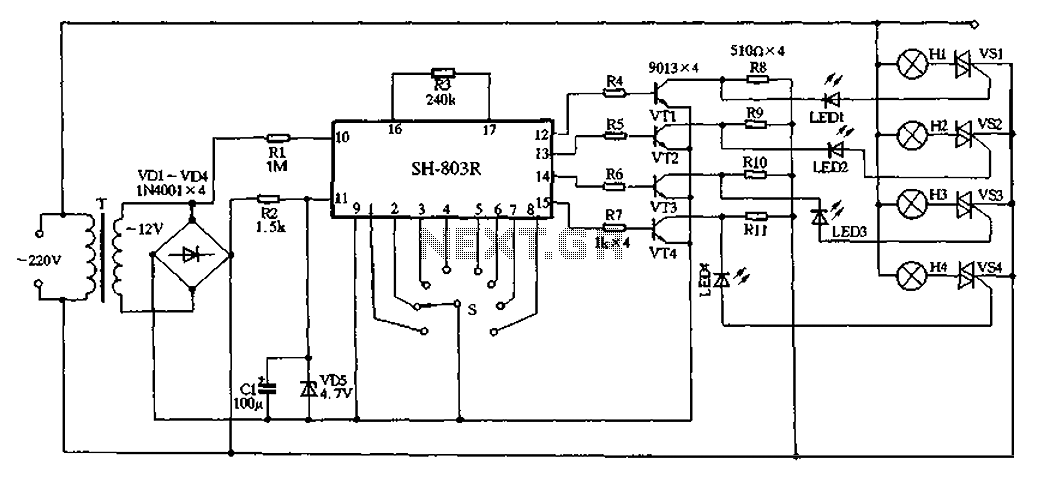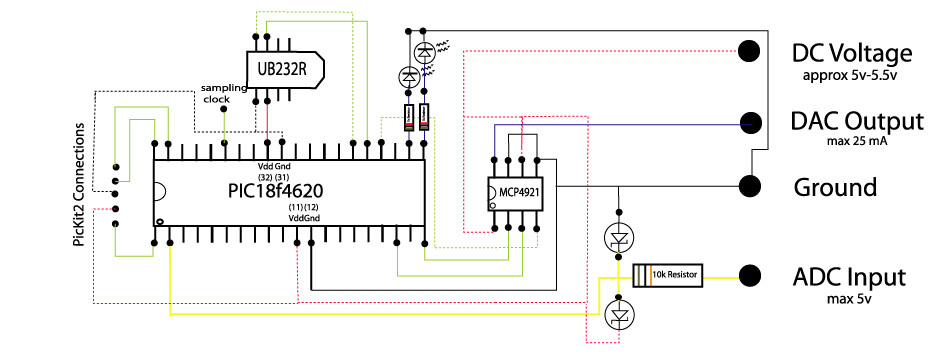
dome light dimmer
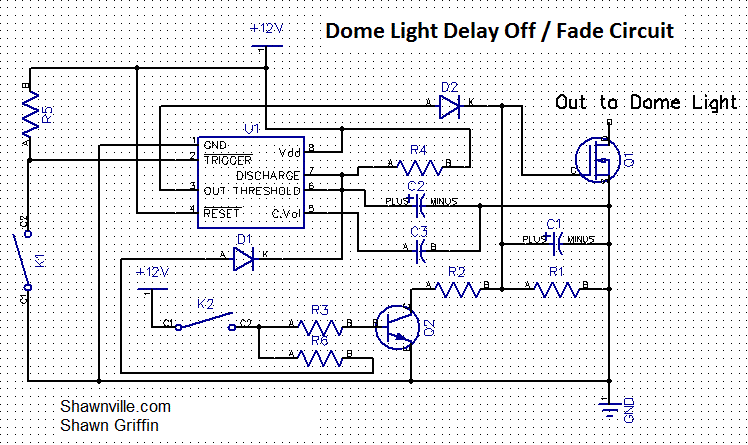
A project is underway to create a custom electronic circuit for a 1969 Chevelle. The design aims to replicate a retained accessory power feature similar to a product offered by Dakota Digital, but at a lower cost. The circuit utilizes a 555 timer, where a capacitor (C2) and a resistor (R4) connected to pins 6 and 7 of the timer determine the duration for which the output on pin 3 remains high. Increasing the capacitance or resistance will extend the output duration.
The circuit design incorporates a standard 555 timer IC, which is widely used for timing applications. The configuration is set in monostable mode, where a trigger signal on pin 2 initiates the timing cycle. When the circuit is activated, the capacitor C2 begins to charge through the resistor R4. The time duration for which the output at pin 3 remains high can be calculated using the formula:
\[ T = 1.1 \times R4 \times C2 \]
where T is the time in seconds, R4 is the resistance in ohms, and C2 is the capacitance in farads. The choice of values for R4 and C2 will directly affect the performance of the circuit, allowing for customization based on the specific requirements of the retained accessory power feature.
Additionally, the circuit may include a diode for reverse polarity protection and a power supply input that can be connected to the vehicle's battery. Proper decoupling capacitors should be added near the power supply pins of the 555 timer to ensure stable operation. The output from pin 3 can be connected to a relay or transistor, allowing the control of higher current loads, such as the vehicle's accessory systems.
This design provides a cost-effective solution for integrating a retained accessory power feature into vintage vehicles, enhancing functionality while maintaining a classic aesthetic.I am building this for my 1969 Chevelle. Dakota Digital has something similar, but I didn`t want to spend $200 onit. Iam working on replicating the retained accessory powertoo. The capacitor (C2) & resistor (R4) connected to pins 6 & 7on the 555 timer controls how long the output on pin 3is high. Alarger capacitor or more resistance will give you moretime. 🔗 External reference
The circuit design incorporates a standard 555 timer IC, which is widely used for timing applications. The configuration is set in monostable mode, where a trigger signal on pin 2 initiates the timing cycle. When the circuit is activated, the capacitor C2 begins to charge through the resistor R4. The time duration for which the output at pin 3 remains high can be calculated using the formula:
\[ T = 1.1 \times R4 \times C2 \]
where T is the time in seconds, R4 is the resistance in ohms, and C2 is the capacitance in farads. The choice of values for R4 and C2 will directly affect the performance of the circuit, allowing for customization based on the specific requirements of the retained accessory power feature.
Additionally, the circuit may include a diode for reverse polarity protection and a power supply input that can be connected to the vehicle's battery. Proper decoupling capacitors should be added near the power supply pins of the 555 timer to ensure stable operation. The output from pin 3 can be connected to a relay or transistor, allowing the control of higher current loads, such as the vehicle's accessory systems.
This design provides a cost-effective solution for integrating a retained accessory power feature into vintage vehicles, enhancing functionality while maintaining a classic aesthetic.I am building this for my 1969 Chevelle. Dakota Digital has something similar, but I didn`t want to spend $200 onit. Iam working on replicating the retained accessory powertoo. The capacitor (C2) & resistor (R4) connected to pins 6 & 7on the 555 timer controls how long the output on pin 3is high. Alarger capacitor or more resistance will give you moretime. 🔗 External reference
